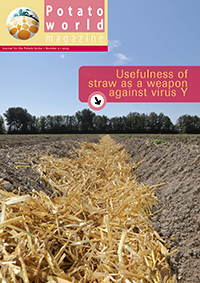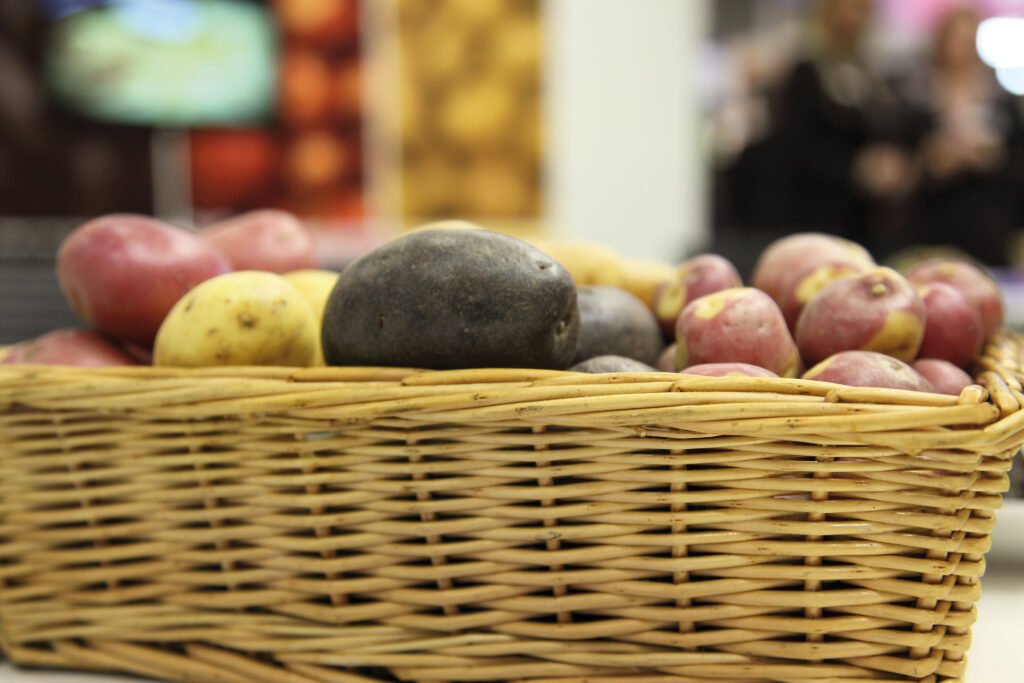Already a subscriber? Activate your premium account

Potatoworld Magazine

A commodity is a product, be it from anorganic source such as iron ore or organic such as wheat, that is interchangeable and homogeneous and of which its origin does not matter. Fresh potato sold in shops, markets and supermarkets when harvested and traded in bulk generally is considered as such a commodity.

One of the characteristics of a good is that prices drop when overproduction takes place due to increased production or to declining demand. Growers that cannot readily invest in new machinery, buildings and production techniques while prices drop and occasionally prices of other commodities increase face a dilemma. Should they stay in fresh bulk commodity potato, or enter potato specialties markets or destine their land to other crops of which prices increase such as wheat or energy crops making their potato investments redundant? Researchers Lange and Kawchuck published an article in the American Journal of Potato Research (2014, 91:440-446) about the various growth strategies for the declining German fresh potato market which is quite relevant for similar markets throughout the world. Over fifty percent of potato production in the European Union takes place in the Netherlands, United Kingdom, Northern France and Germany, with Germany having the largest share. Over forty percent of the German production of around eleven million tons per annum is sold as fresh potato within the country. The outlet of the remainder are fresh and processed exported potatoes, seed, starch ( a quarter of total production) and some animal feed. Usually in advanced potato production economies, the area decreases, yields increase and total production decreases due to declining demand. Prices are relatively stable as markets adapt but drop when production is high suddenly due to favourable weather conditions or are high when total production is low. Potato farm gate price in Germany is around € 100 per metric ton when national production is 11 million tons, € 200 at 9.5 million tons and € 50 at 13 million tons. This volatility is mainly determined by growing conditions and by the high inelasticity of the demand: consumers hardly eat more potato when its price is low. In Europe potato production is further under pressure due to high prices of wheat and crops grown for biogas production in some countries such as Germany. Moreover consumers eat more pasta, rice and processed potato products. The export potential of fresh potato is limited due to its bulkiness making the costs of transport high in view of the low price of the product. In neighbouring Netherlands the potato industry as a whole remained strong and profitable due to specialization (seed production and processed potato products) with eighty percent of all production exported. Transport costs for such more valuable products than fresh consumer potato become of lesser relative importance. In the Netherland fresh potato for the national market represents less than fifteen percent of total national production.
Lange and Kawchuck reviewing literature propose several options to increase the fresh potato market. Breaking down the commodity market into segments – niches – is one approach to attract new customers. Where do consumers live and how old are they?, what is their life-style and income and how do they behave? Following this analysis new products need to be developed such as organic, new specifically branded (local) varieties, adapted sizes (e.g. little potatoes) and colour (mixtures), packages( size, ‘windows’) and produced environmentally friendly, specific taste and flavour, convenience (microwave ready) appearance, origin and of recent increasing importance: of low caloric content. Diversification into products enhancing health due to increased levels of e.g. anthocyans, carotenoids, vitamin C, folic acid, glycaemic index and micronutrients (e g iron, zinc) also offer possibilities of diversification and maintenance of market share. To achieve this the current market can be penetrated among others by attracting new e.g. younger potato consumers or making current ones eat more through advertisements for instance, expand the market by entering new segments such as canteens and promote new uses such as making hash browns at home or make innovative current fresh potatoes such as offering coloured flesh or displaying the tubers attractively as shown in the accompanying photo. The number of possibilities to maintain or increase markets are overwhelming so the best solution will always be situational and will depend much on population dynamics, pressure on time available for cooking and the importance given in time and space to health issues.
My personal belief is that potato’s strength in future will be in offering convenience (right grade and package, ready to cook), consistency (quality year round, no defects) and health promotion. And telling it is all good through advertisement
Anton Haverkort
anton.haverkort@wur.nl
Events
©2015 - 2024 Potatoworld | Webdesign and realisation COMMPRO